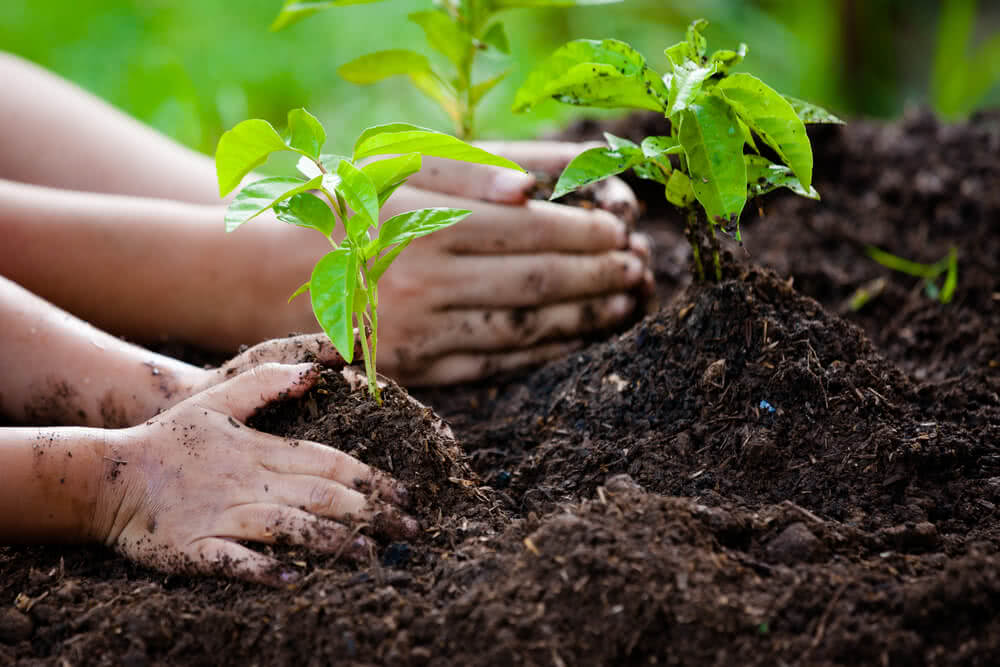
 Pachu Menon
Pachu Menon

We are at the threshold of what could be rightly termed the 'concrete age,' where vast expanses of land in both the urban and rural belts of the country are falling prey to a development mania that has the destruction of everything natural as its aspiration. The aim is to create an artificial ambience that cannot be depended upon to stand the test of time. It has now reached a stage where the balding landscapes have raised visions of impending disasters gaining ground with every passing day. The consequences of denuding nature are presenting themselves as calamities in different parts of the country.
But have we learnt any lessons from these devastations? In these circumstances, 'limping back to normalcy' has come to characterise a trend where tiding over the present situation to 'live another day' takes precedence over everything else for the survivors. But why do we prefer living in a state of obliviousness to a recurring danger that is a precursor to evident doom in the absence of corrective steps?
Ravaged, we now find renewed efforts from different quarters to combat the wrath of nature by ascertaining that humankind stops its senseless plundering of nature. It is only by giving back to nature that mankind can hope to live in peaceful coexistence with it. Conservation of all natural resources is important since they maintain the ecological balance. This is when one thinks back to the ancient traditions in our country, which played a significant role in preserving nature's biological wealth and helping maintain ecological balance.
At one of the many interesting programmes organised by the Goa Raj Bhavan recently, a prominent personality from Kerala appraised the motley gathering about a unique tree-plantation drive across the coastal state commemorating the 90th birthday celebrations of Sugathakumari, celebrated Malayalam poet and Kerala's renowned environmental activist.
The distinguished guest spoke about a couple of afforestation techniques, which made me seek more information on this subject.
It is rightly said that the role of cultural and spiritual values is crucial to nature conservation. The practice of maintaining sacred groves known as 'Sarpakavus' is an age-old tradition prevalent in the South Indian state of Kerala. A piece of land set apart from traditional dwellings in Kerala - besides being revered as a sacred place - is a small but dense pocket of biodiversity that is believed to be the abode of Serpent Gods. The sacred groves are patches of green ecosystems which shelter exotic flora and fauna. Beyond cultural significance, these groves serve as hotspots of ecological diversity. Sapakavus of Kerala is an example of Indigenous ecology that shows a model of a symbiotic way of living with nature.
Going through relevant research papers, one garners that the Khasi hills of north-east India, the Western Ghats, and the Aravali hills have abundant numbers of sacred groves that have been maintained devoid of human intervention for a long period of time. The decline in the number of sacred groves is owed to multiple factors, including deforestation, loss of faith and urbanisation. Indian spiritual tradition has an age-old history of sustaining a symbiotic relationship with nature. What has changed over the years? Irreverence and non-adherence to one's religious tenets have brought about a drastic change in lifestyles that have witnessed a rapid alienation from nature!
Goa, too, plays host to a number of sacred groves. UNESCO (1996) defined sacred groves as areas of 'natural' vegetation preserved through local taboos and sanctions that entail spiritual and ecological values. The ecological values are found in the traditional association of the sacred groves with wildlife and physical landscapes such as streams.
Efforts at Auroville, Tamil Nadu, where botanists and community stewards are using scattered patches of native forest as a blueprint to revive the tropical dry evergreen forest ecosystems of coastal India deserve a special mention. An article by Mahima Jain last year vividly describes this endeavour. It is akin to the random planting of saplings, which then align in close proximity to create a dense forest.
Afforestation and its benefits are not unknown to mankind. It is the establishment of a forest or stand of trees in an area where there was no recent tree cover. The acclaimed Miyawaki method of afforestation developed by Japanese botanist and plant ecology expert Professor Akira Miyawaki draws inspiration from nature's ecosystems to create 100% organic, dense and diverse pioneer forests in as little as 20 to 30 years.
Miyawaki forests are viable solutions for cities looking to rapidly build climate resilience.
An article on the Miyawaki method of creating forests mentions that the process isn't just unique because it restores native habitats using native trees. The afforestation principles are based on understanding how these species would interact in a natural forest. "You plant a diverse mixture of trees close together to maximise density and create balance. Seeds drop from trees randomly to stimulate growth, or fallen trees open up clearings to the sun. As the closely planted saplings have to compete for light, which only shines on them from above, they shoot upwards very fast instead of sideways."
There is a growing feeling that preserving, protecting, and expanding the existing sacred groves needs to be seen as a priority in Kerala. The sacred groves are important because they constitute the last surviving, though dwindling, natural forests of the state. If the rare species of trees that they host vanish from the earth, they cannot be brought back.
However, there is no doubt that the clamour for extending our green cover is finding a voice among environmentalists desirous of making the world a better place to live in. And they have been treading a resolute path on this matter. Their methods may have been different, but over the years, they have been unanimous in their opinion.
Kerala has been at the forefront of pioneering strategies for increasing tree cover in the state. The scheme for afforestation of non-forest areas through panchayats warrants a special mention here. This scheme aims at creating woodlots in each and every panchayat wherever suitable lands for afforestation are available. It wouldn't be wrong to state that Kerala's tree plantation and conservation dreams are brought to fruition by the tireless efforts of several NGOs.
The 'We Grow Forest Foundation' is a registered NGO founded by a group of passionate women working predominantly in the environmental sector. Their vision is to promote a profound appreciation and understanding of the forest ecosystem while actively contributing to the creation of a greener planet. Yet Kerala is tottering at the brink of despair, bearing the brunt of a deluge of natural calamities that seem to strike the region at will. With so much credit for envisaging ways to combat the vagaries of nature, why does the state continue to be so vulnerable to natural hazards?
Faced with the enormities of seasonal disasters, unless the coastal state arrests its rapid urbanisation and decides on a policy that will not see any further 'compromises' when it comes to accommodating its 'development' demands, it is going to be an inevitable nosedive for God's own country in this regard. At the receiving end of nature's ire, the frequent news of devastations reported in other parts of the country hardly dispel fears of a similar fate striking those regions as in Kerala.
Deforestation increases the risk of flooding by reducing the ability of the earth to absorb and handle extreme weather patterns. Forests absorb and disperse heavy rain, reducing its force and volume. It is ironic that after going about systematically ravaging and plundering nature and its assets, mankind has shown the same alacrity to spend time and unlimited financial resources to 'replenish' nature! No visible signs of remorse are apparent, though. So while we have rampant deforestation plans to push ahead developmental agendas in one area, afforestation and reforestation efforts to conserve nature at other places are creating headlines. While campaigns against tree-felling and hill-cutting have become stronger with every passing day, they appear to have become inevitable casualties of the unsustainable development that the country is witnessing now.
When will we learn that the present progress cannot be at the expense of future generations!?